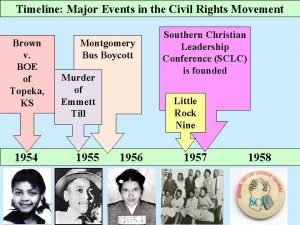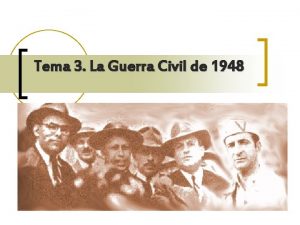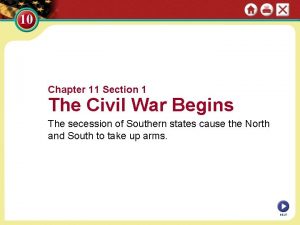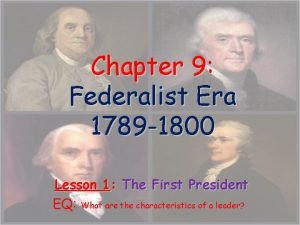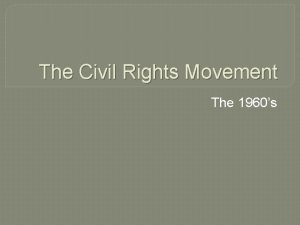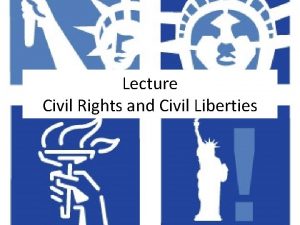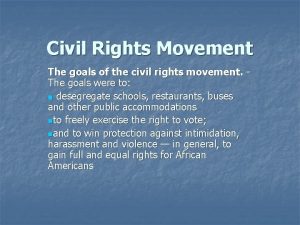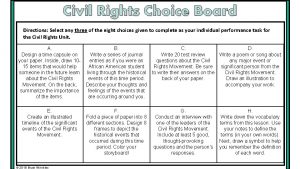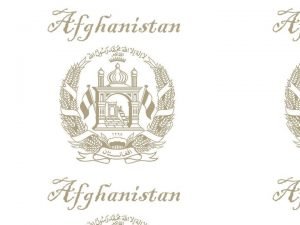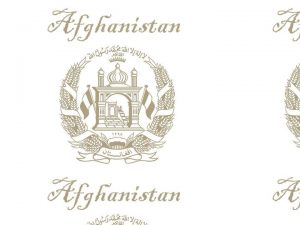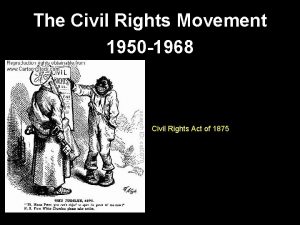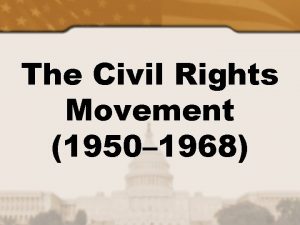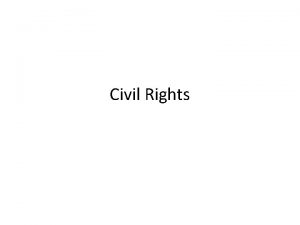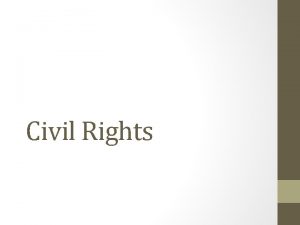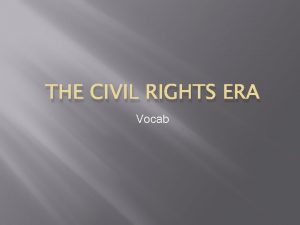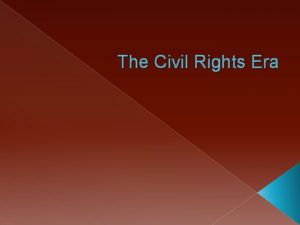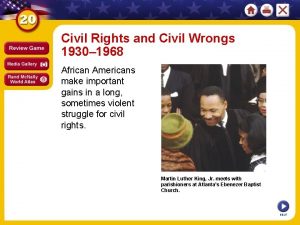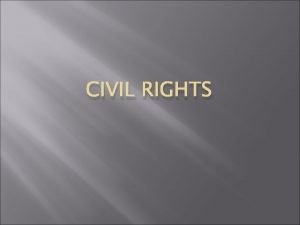THE CIVIL RIGHTS ERA Guided Timeline 1948 1968


















- Slides: 18

THE CIVIL RIGHTS ERA Guided Timeline 1948 - 1968

July 26, 1948 • President Harry Truman issues Executive Order 9981 to end segregation in the Armed Services.

May 17, 1954 • Brown v. Board of Education, a consolidation of five cases into one, is decided by the Supreme Court, effectively ending racial segregation in public schools. • Many schools, however, remained segregated.

December 1, 1955 • Rosa Parks refuses to give up her seat to a white man on a Montgomery, Alabama bus. • Her defiant stance prompts a year-long Montgomery bus boycott.

January 10 -11, 1957 • Sixty black pastors and civil rights leaders from several southern states—including Martin Luther King, Jr. —meet in Atlanta, Georgia to coordinate nonviolent protests against racial discrimination and segregation.

September 4, 1957 • Nine black students known as the “Little Rock Nine, ” are blocked from integrating into Central High School in Little Rock, Arkansas. • President Dwight D. Eisenhower eventually sends federal troops to escort the students, however, they continue to be harassed.

September 9, 1957 • Eisenhower signs the Civil Rights Act of 1957 into law to help protect voter rights. • The law allows federal prosecution of those who suppress another’s right to vote.

February 1, 1960 • Four college students in Greensboro, North Carolina refuse to leave a Woolworth’s “whites only” lunch counter without being served. • Their nonviolent demonstration sparks similar “sit-ins” throughout the city and in other states.

June 11, 1963 • Governor George C. Wallace stands in a doorway at the University of Alabama to block two black students from registering. • The standoff continues until President John F. Kennedy sends the National Guard to the campus.

August 28, 1963 • Approximately 250, 000 people take part in The March on Washington for Jobs and Freedom. • Martin Luther King gives the closing address in front of the Lincoln Memorial and states, “I have a dream that one day this nation will rise up and live out the true meaning of its creed: ‘We hold these truths to be self-evident: that all men are created equal. ’”

September 15, 1963 • A bomb at 16 th Street Baptist Church in Birmingham, Alabama kills four young girls and injures several other people prior to Sunday services. • The bombing fuels angry protests.

July 2, 1964 • President Lyndon B. Johnson signs the Civil Rights Act of 1964 into law, preventing employment discrimination due to race, color, sex, religion or national origin. • Title VII of the Act establishes the U. S. Equal Employment Opportunity Commission (EEOC) to help prevent workplace discrimination.

February 21, 1965 • Black religious leader Malcolm X is assassinated during a rally by members of the Nation of Islam.

March 7, 1965 • In the Selma to Montgomery March, around 600 civil rights marchers walk to Selma, Alabama to Montgomery—the state’s capital —in protest of black voter suppression. • Local police block and brutally attack them. After successfully fighting in court for their right to march, Martin Luther King and other civil rights leaders lead two more marches and finally reach Montgomery on March 25.


August 6, 1965 • President Johnson signs the Voting Rights Act of 1965 to prevent the use of literacy tests as a voting requirement. • It also allowed federal examiners to review voter qualifications and federal observers to monitor polling places.

April 4, 1968 • Martin Luther King, Jr. is assassinated on the balcony of his hotel room in Memphis, Tennessee. James Earl Ray is convicted of the murder in 1969.

April 11, 1968 • President Johnson signs the Civil Rights Act of 1968, also known as the Fair Housing Act, providing equal housing opportunity regardless of race, religion or national origin.
 Civil rights webquest
Civil rights webquest Civil rights timeline of events
Civil rights timeline of events Esquema guerra civil española
Esquema guerra civil española Civil war guided notes
Civil war guided notes Site:slidetodoc.com
Site:slidetodoc.com Lesson quiz 9-1 the federalist era answers
Lesson quiz 9-1 the federalist era answers Civil rights sitins
Civil rights sitins Mother of the modern day civil rights movement
Mother of the modern day civil rights movement Impressionism apush
Impressionism apush Right to die
Right to die Civil rights movement jeopardy
Civil rights movement jeopardy Unit 7: modern ga and civil rights
Unit 7: modern ga and civil rights Usda civil rights training
Usda civil rights training Civil rights training child nutrition programs
Civil rights training child nutrition programs Goals of the civil rights movement
Goals of the civil rights movement Civil rights in child nutrition programs
Civil rights in child nutrition programs Civil rights graphic organizer
Civil rights graphic organizer Civil rights leaders collage
Civil rights leaders collage Civil rights choice board
Civil rights choice board

